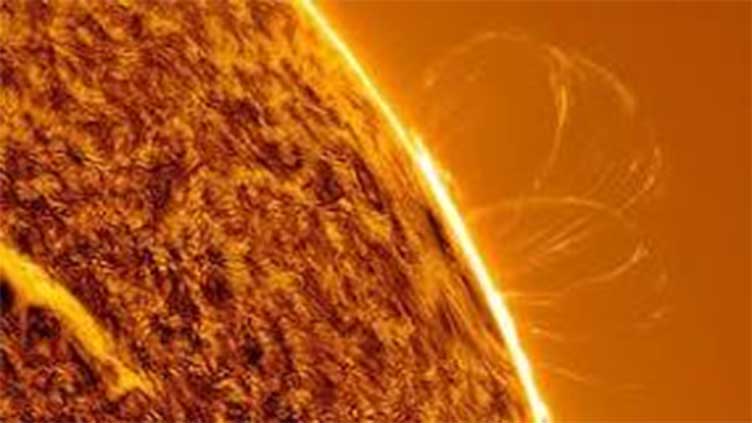Astronomer captures extraordinary loops on Sun after big explosion

Technology
The phenomenon known as "post-flare loops"
(Web Desk) - In the aftermath of a significant solar flare this week, the skies offered a spectacular display that caught the attention of astronomers and sky-watchers alike.
Argentine astronomer Eduardo Schaberger Poupeau managed to capture an extraordinary phenomenon known as "post-flare loops" - glowing arches that often follow such powerful solar events.
These post-flare loops, which can extend up to 1,00,000 kilometres above the sun's surface, are typically visible for minutes to hours after a flare occurs.
They are thought to be magnetic structures filled with plasma that has been super-heated by a solar explosion.
However, there is still some debate within the scientific community about their exact nature.
Some studies suggest that these loops may involve gas condensing from the sun's corona, indicating a complex interaction where the flare not only expels material but also draws it in.
Understanding these solar phenomena is crucial, as solar flares can have profound effects on Earth, potentially disrupting communication systems, satellite operations, and power grids.
The charged particles and electromagnetic radiation emitted during these events pose risks to our increasingly technology-dependent society.
With the approach of Solar Maximum later this year, a period of peak solar activity in the Sun's 11-year cycle, scientists anticipate more frequent and intense solar flares.
This phase will provide ample opportunities for observation and study, allowing for a deeper insight into the dynamics of solar flares and their impact on space weather.
The recent observations by Poupeau contribute to a growing body of knowledge.


